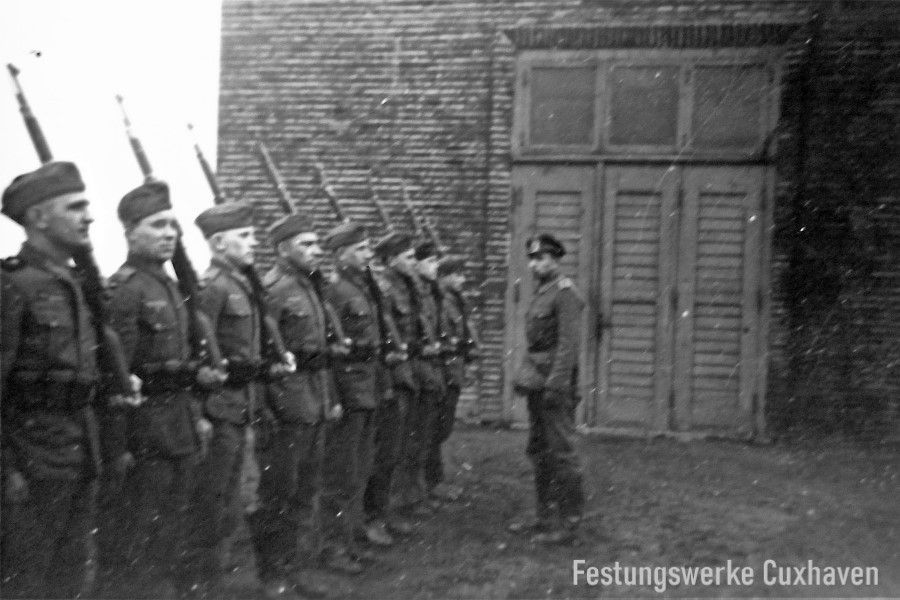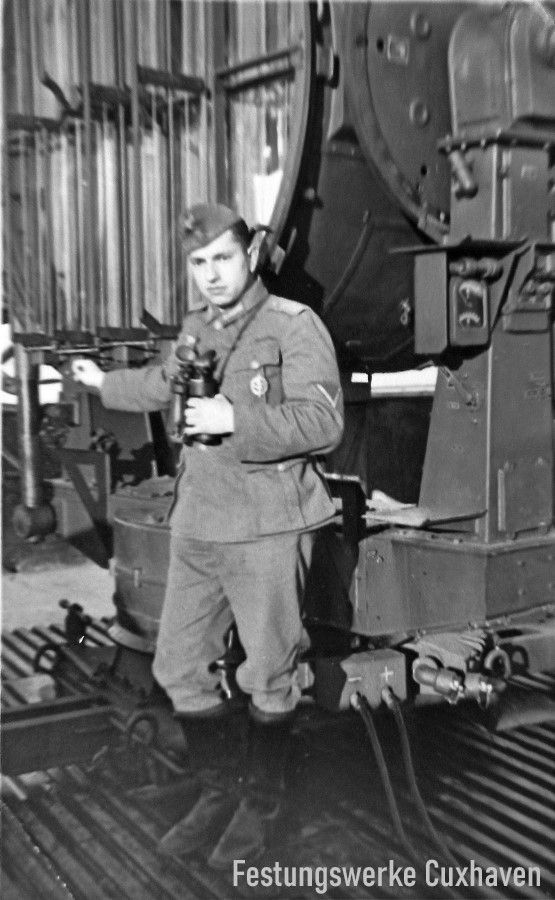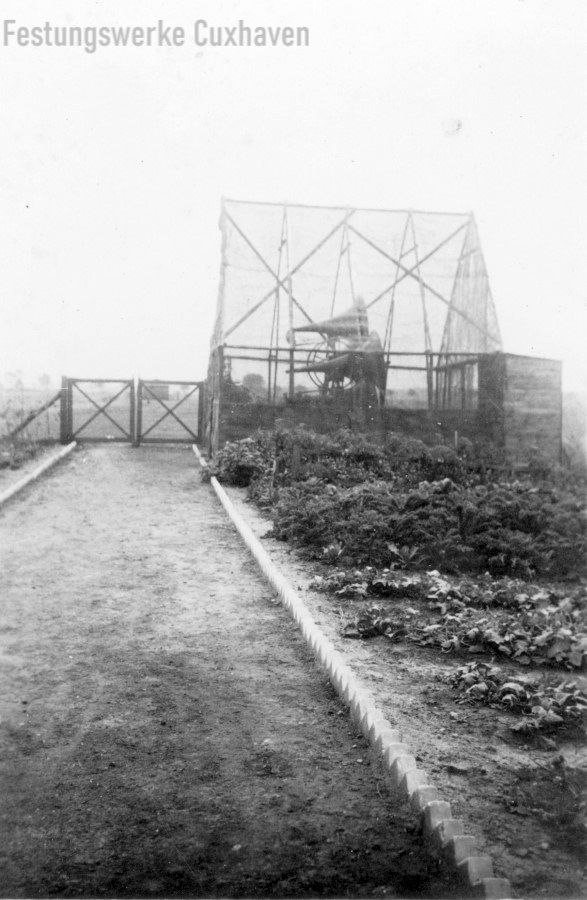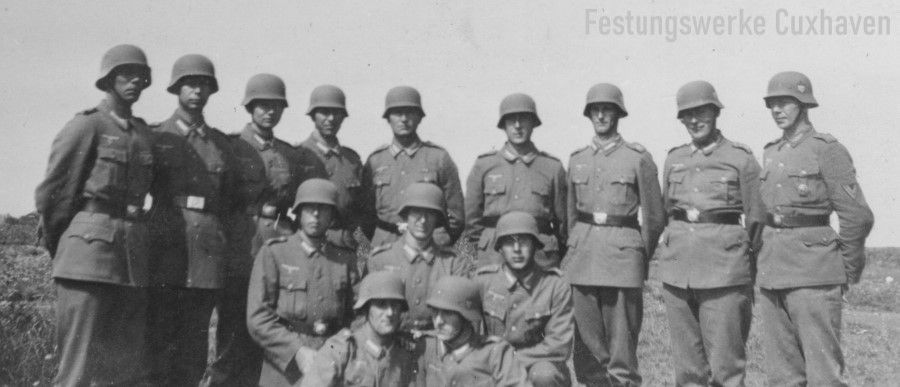
Nördlich der Heerstraße, parallel zum heutigen Böhlgraben befand sich damals ein weiterer
Scheinwerferhochstand. Er war vom Bauprinzip mit dem Modell in Duhnen vergleichbar, handelte es sich dabei ebenfalls um ein Regelbau Model FLA. 077. Bei dem Scheinwerfertyp handelte es sich um ein Model 150 cm, der bei Bedarf mit einem Fahrstuhl in den Bunker herabgelassen werden konnte.
Quelle: Gerd Wildfang
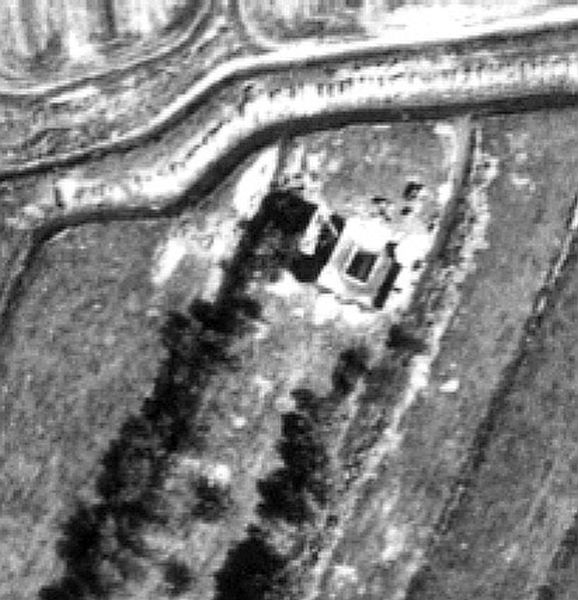
What: NN
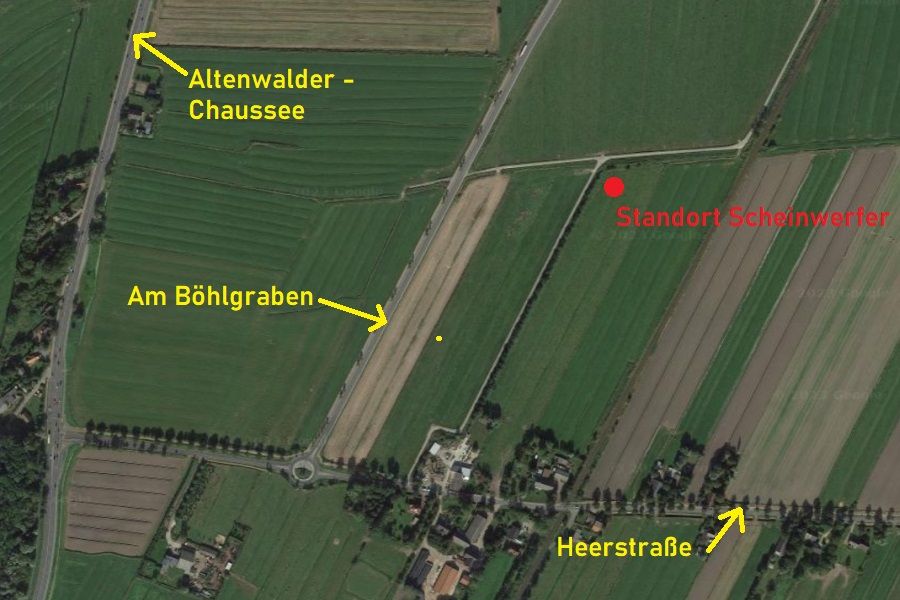
The headlight tower was located parallel to today's Böhlgraben.Source: NN
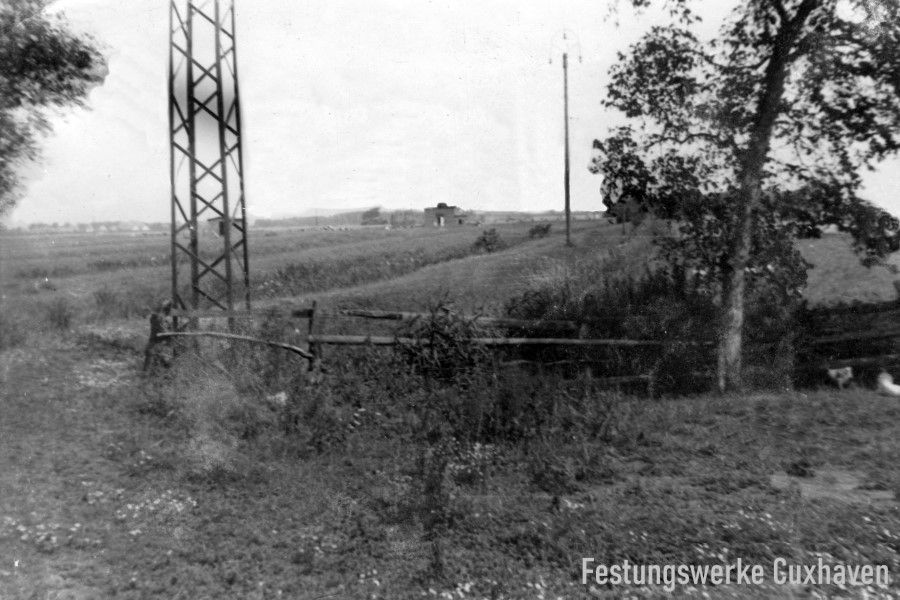
View from the Heerstrasse towards the south towards the high stand.Source: Gerd Wildfang/Becker
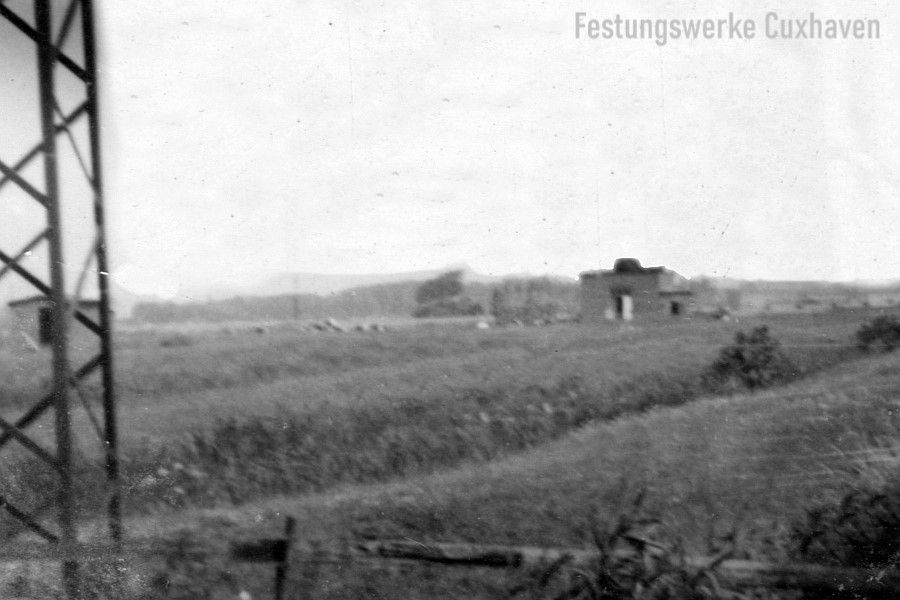
In the enlargement, the tower had a large gate to the south to allow the spotlight to be removed or replaced if necessary.Source: Gerd Wildfang/Becker
The funnel sound listening device of the Heerstrasse facility on the back of the tower, looking south.Source: Gerd Wildfang/Okatz
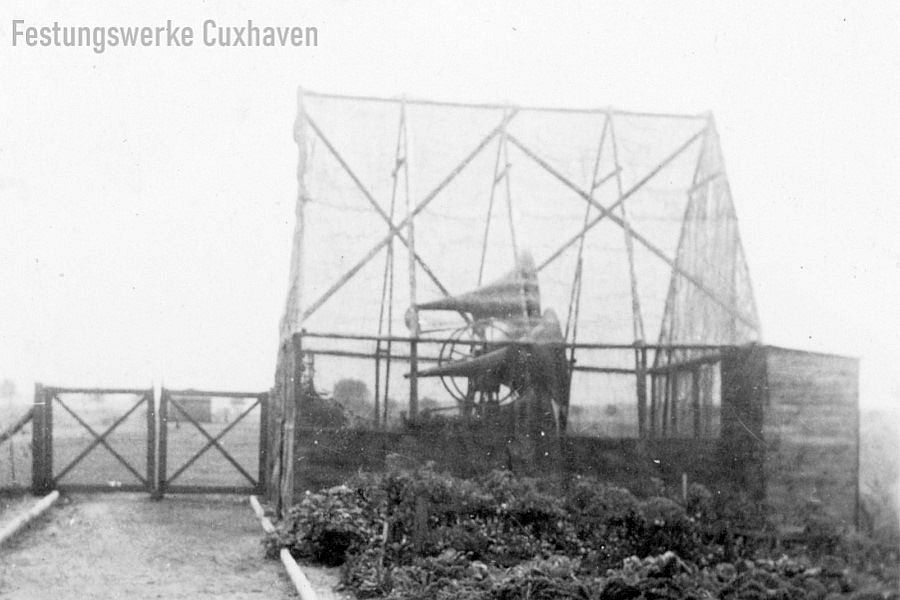
The funnel sounder and anti-aircraft searchlight usually worked synchronously. It indicated the direction and elevation of the approaching enemy aircraft according to the searchlight.Source: Gerd Wildfang/Okatz
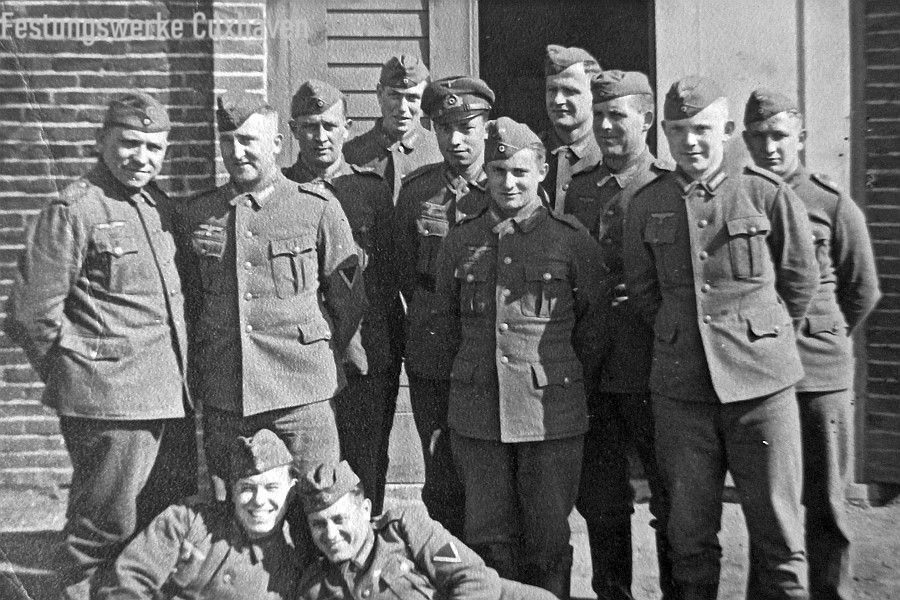
The searchlight crew at the beginning of the war in front of the entrance to the high stand.Source: Gerd Wildfang/Becker
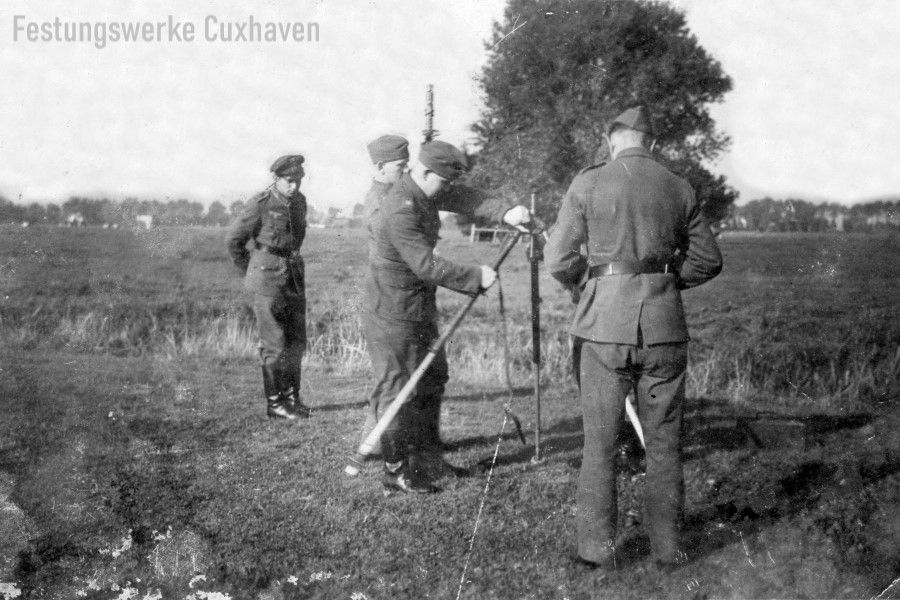
A machine gun is set up on a tripod. In the background the "Altenwalder Chaussee". On the left "Werner Okatz".Source: Gerd Wildfang/Becker
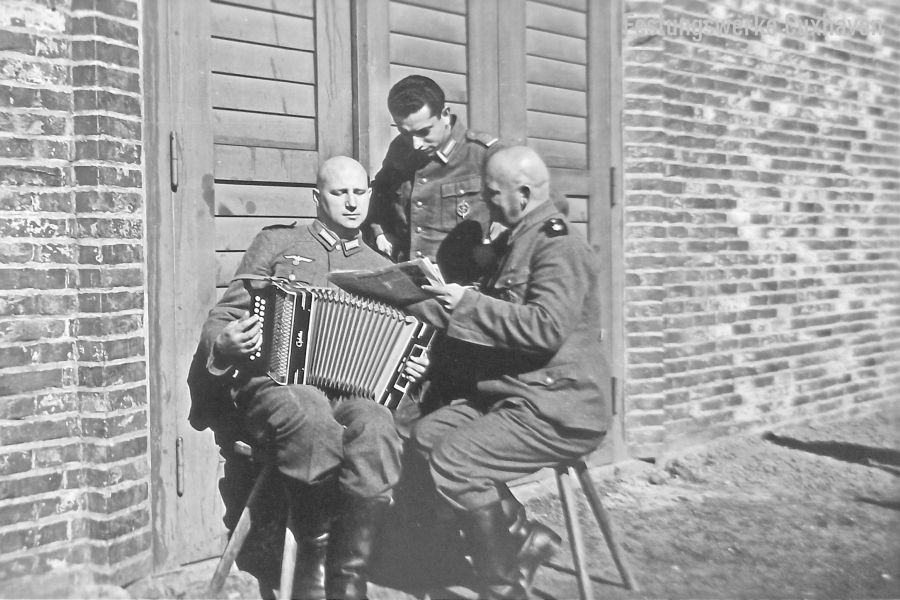
The time during the day between missions was often used for leisure activities, especially at the beginning of the war. As the situation worsened and people were transferred to other locations, this increasingly disappeared.Source: Gerd Wildfang/Okatz
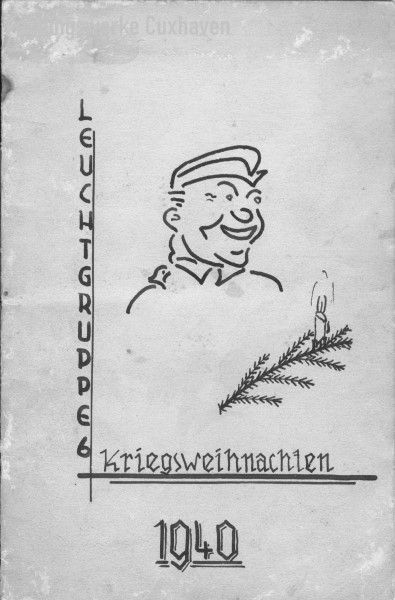
Source: Gerd Wildfang
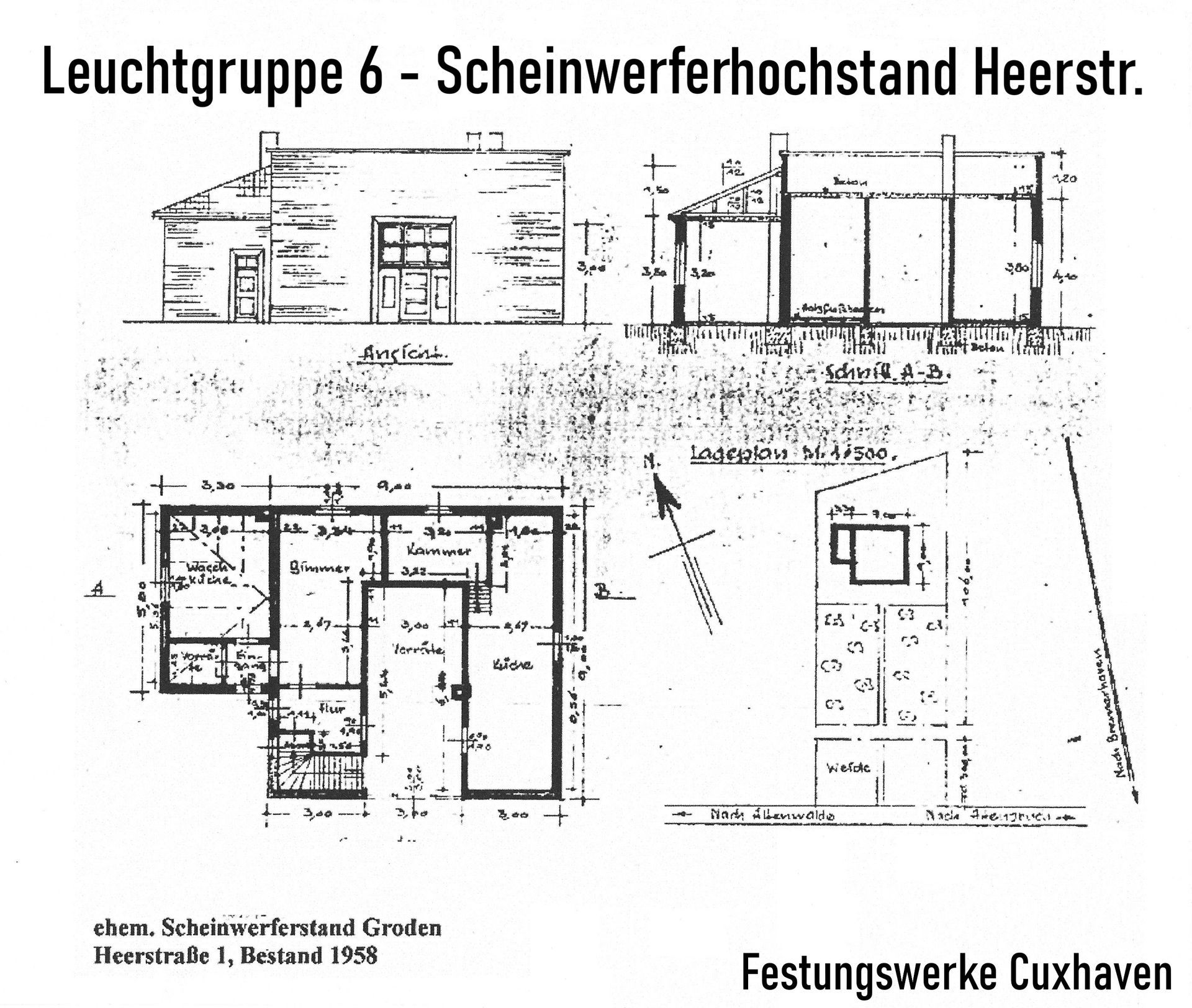
Existence of the former bunker from 1958. After the war, it was still inhabited by a few families until the mid-seventies. After that, the building gradually fell into disrepair and was finally demolished. Source: SHBA-Cux



